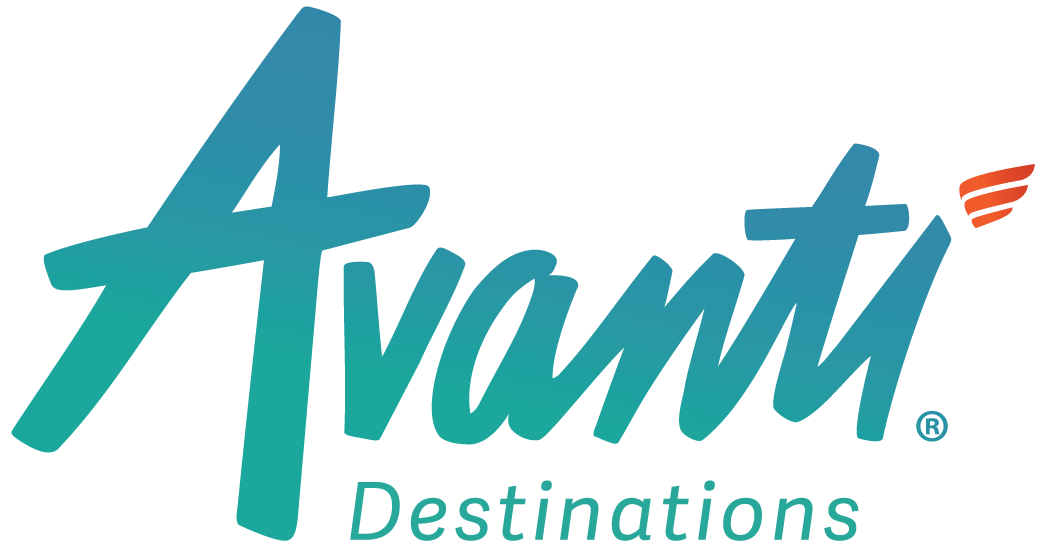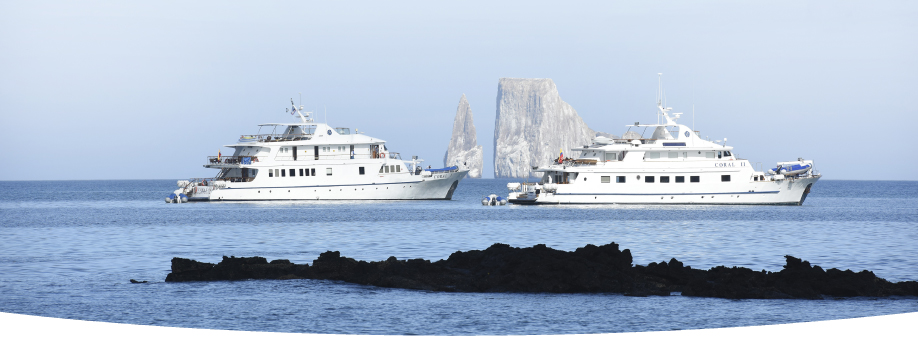

M/Y Coral I/II Cruise:
Itinerary B
Itinerary B
Visit the islands and see famous Galapagos creatures such as penguins and fur seals living on the equator, marine iguanas, giant tortoises, blue-footed boobies and the
Galapagos albatross.
ACCOMMODATIONS
• 4 Nights M/Y Corals
INCLUSIONS
• Roundtrip Air and Ground Transfers
• Galapagos National Park Fee
• Tours with Naturalist Guide
• All Meals
• All Meals
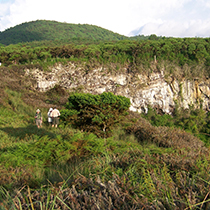
Wednesday:
Baltra Airport: Departure from Quito or Guayaquil to Baltra (2 1/2 hours flight). Passengers are picked up at the airport by our naturalist guides and taken on a ten minute bus drive to the pier to board the M/Y Corals.
Highlands Tortoise Reserve and Pit Craters, Santa Cruz Island: Dry landing. In the central highlands of Santa Cruz Island, we have our best opportunity to interact with wild Galapagos giant tortoises. A short walk among these huge, 600lb reptiles will also offer the chance for more highland species, including several species of finches. A visit to the collapsed twin sinkholes (Gemelos) puts us in a stunning forest of endemic Scalesia.
(Dinner, Accommodations, M/Y Corals)
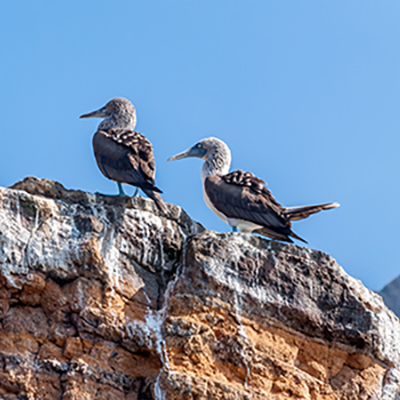
Thursday:
Punta Vicente Roca, Isabela Island: This is a spectacular visitor site, surrounded by immense cliffs of the eroded volcano, studded with resting seabirds such as brown noddies and Nazca boobies, which we will watch in close proximity from our dinghies. Snorkeling here is superb, with certain species of fish only found in the west of the archipelago. We also have a chance of swimming with penguins, and potentially green turtles.
Espinosa Point, Fernandina Island: Dry landing. Espinosa Point is the only spot that we visit on Fernandina, and from it we can see the island of Isabela across the Bolívar Channel, an area that boasts some of the highest diversity of endemic sea fauna in the Galapagos. The largest, most primitive-looking race of marine iguanas* are found mingling with sea lions and Sally Lightfoot Crabs; a wonderful opportunity to encounter Flightless Cormorants at their nesting sites, Galapagos Penguins and the "King" of predators on the Islands, the Galapagos Hawk.
(Breakfast, Lunch, Dinner, Accommodations, M/Y Corals)
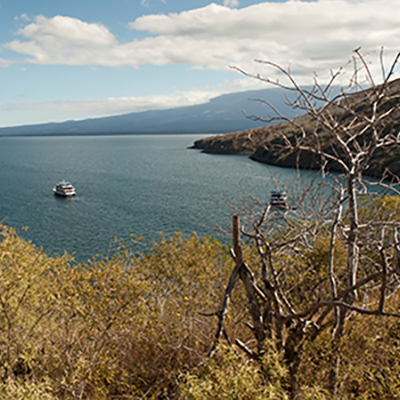
Friday:
Urbina Bay, Isabela Island: Wet landing on a volcanic "black" beach. Depending on the season, we may find giant tortoises, land iguanas and the unusual Flightless Cormorant. After a short walk inland, snorkeling time is allotted, giving you yet another chance to swim with sea turtles, sea lions and countless tropical fish. Urbina Bay features a wide variety of plant life that changes depending on the season. We can observe the beautiful colors of plants that attract different insects, birds and reptiles. We will explore the uplifted coral reef that resulted from 1954 volcanic activity, with a spectacular view of Alcedo Volcano.
Tagus Cove, Isabela Island: Dry landing. A well-known hideout and deep water anchorage in the days of pirates, Tagus Cove was also one of the sites visited by Charles Darwin and the HMS Beagle in 1835. A beautiful hike leads us past an overview of Darwin Lake and on to a stunning volcanic landscape revealing Isabela island's dramatic northern volcanoes. Once back at sea level snorkel along a submerged wall with turtles, fish, penguins and potentially flightless cormorants.
(Breakfast, Lunch, Dinner, Accommodations, M/Y Corals)
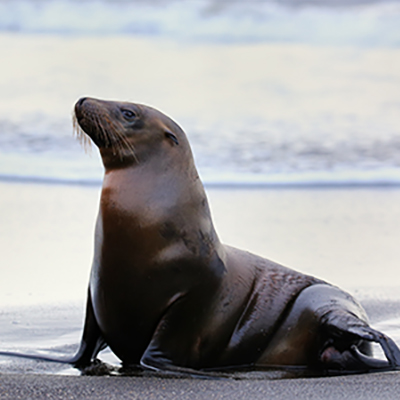
Saturday:
Egas Port, Santiago Island: Wet landing. The black volcanic sand sets this landing apart from most. Egas Port is best known for the dramatic shoreline where we meet a host of species that choose to live between land and sea, including the endemic Galapagos fur seals. Other species of note include American oystercatchers, sea lions, waders, herons, lava lizards and Galapagos hawks. An optional visit takes us to an abandoned salt mine famous in its day for supplying salt to mainland Ecuador.
Sullivan Bay, Santiago Island: Wet landing. This visitor site located at the southeastern portion of Santiago Island, and of important geologic interest, features extensive lava flows believed to have been formed during the last quarter of the 19th century.
(Breakfast, Lunch, Dinner, Accommodations, M/Y Corals)
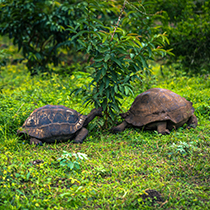
Sunday:
Bachas Beach, Santa Cruz Island: Wet landing. Named for the wrecked World War II barges whose ribs are still visible in the sand, this visitor site offers great swimming, a lovely walk along the shore and a visit to a lagoon behind the high tide line with wading birds, marine iguanas and flamingoes. The two beaches are also favorite nesting sites for green turtles, which often leave tractor-like tracks in the sand.
Baltra Airport: After the visit, passengers will be transferred to the airport for their return flight to Guayaquil or Quito.
(Breakfast, M/Y Corals)
** Itinerary and inclusions are subject to change

